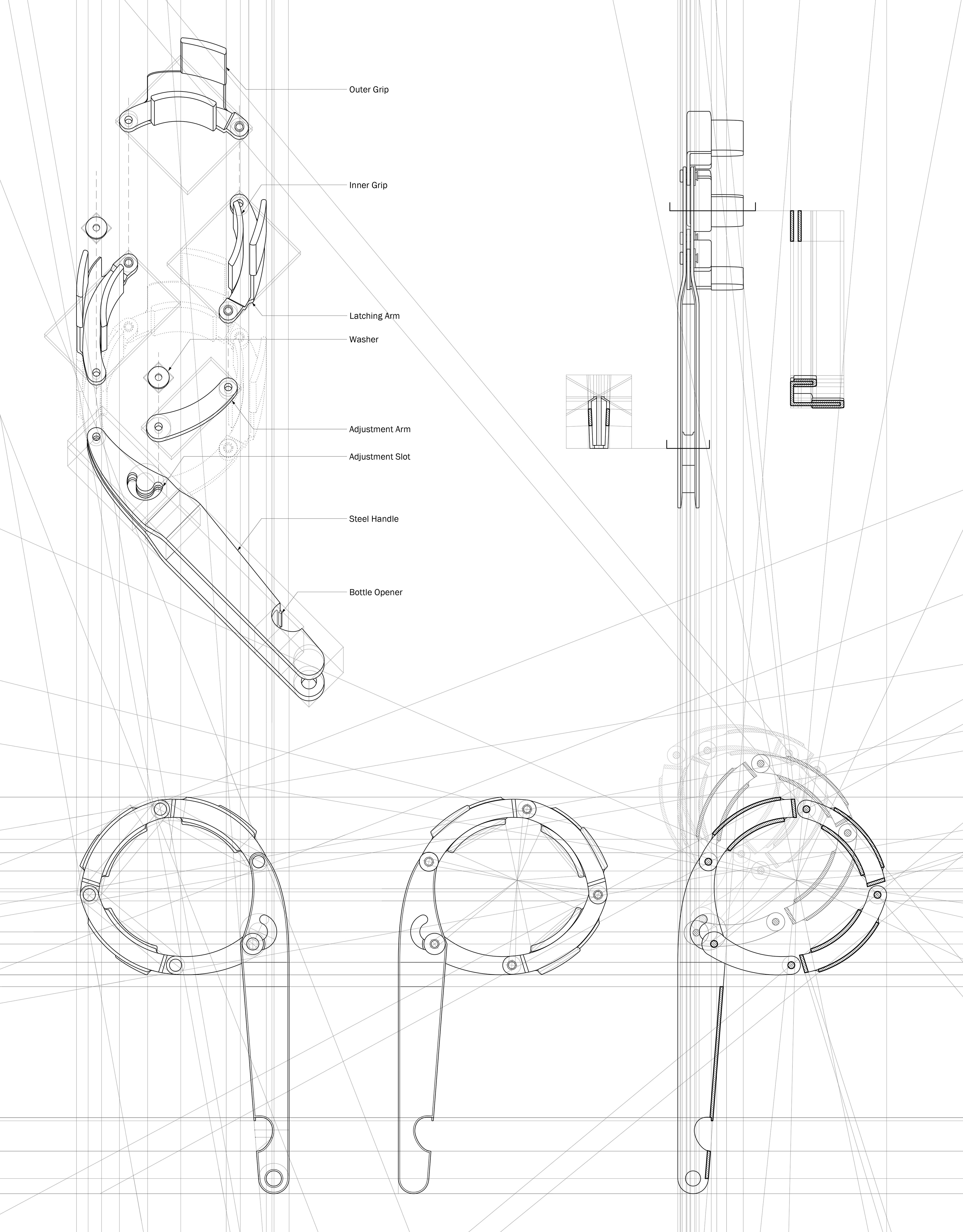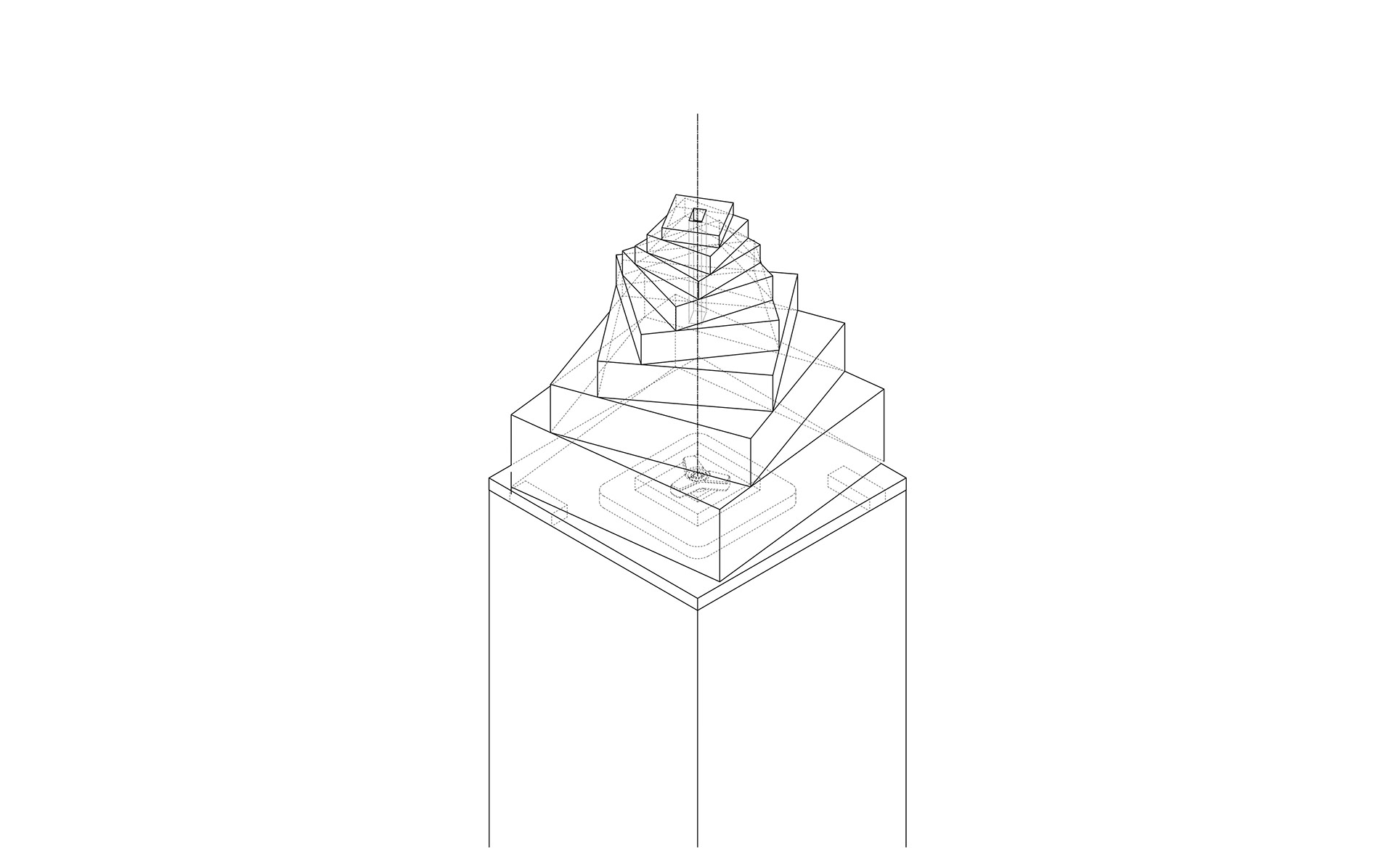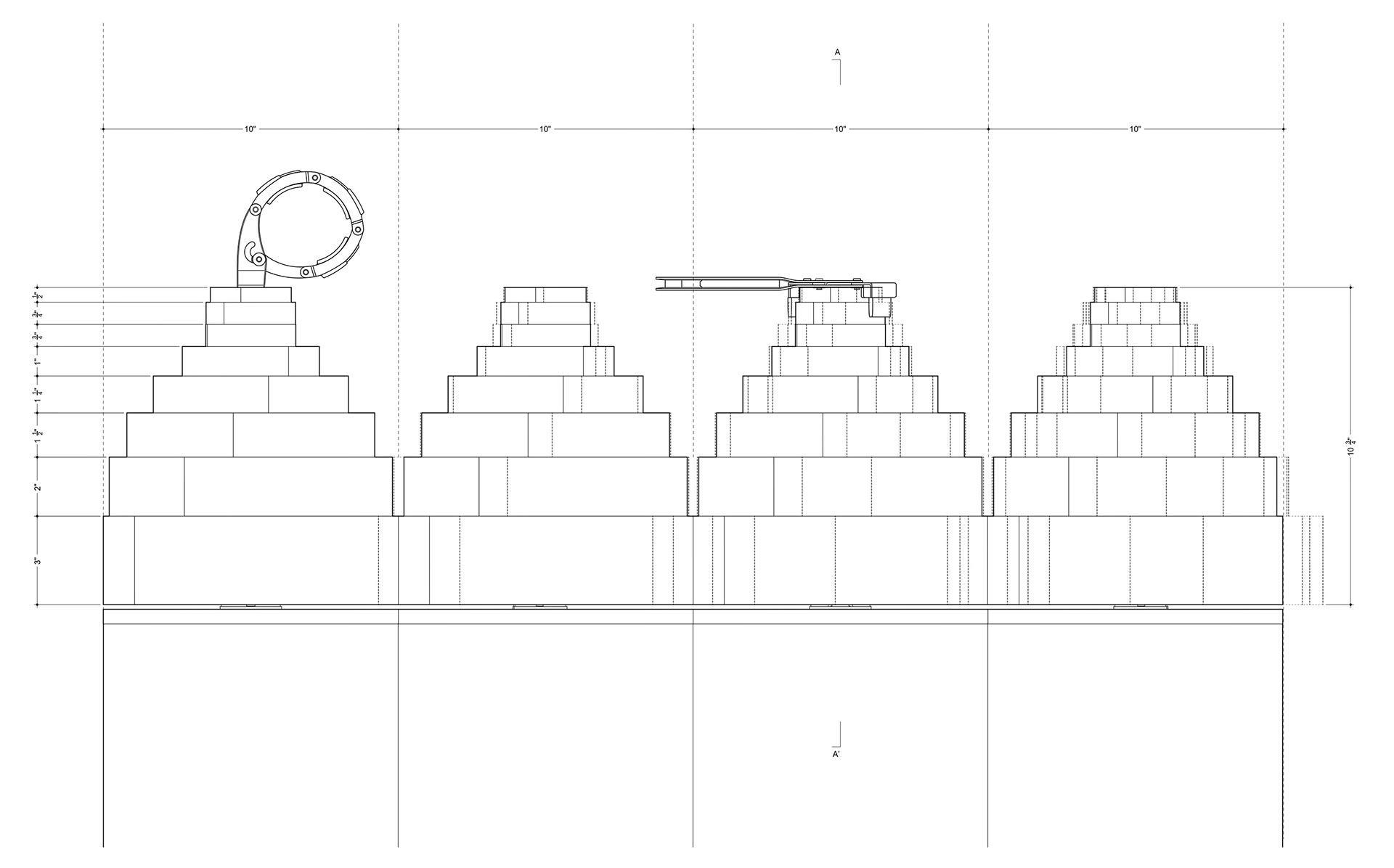Students were asked to acquire an antique or vintage handheld tool with at least one active mechanical component.
Students investigated their objects with a series of drawings: first hand-drawn, then computer-assisted (using Rhinoceros 6 in 2D). The drawings emphasize the active/kinetic components of the tool while simultaneously depicting it as a measured object.
This adjustable jar opener is drawn following typical engineering conventions (axon, top, side, section). Detail views and ghosted linework imply use and motion and add life to an otherwise analytical drawing.


The above diptych contrasts the visual representation of the tool as an engineered object with its representation as a sculptural mechanism that can exist in many different states.




Students were then tasked with designing a pedestal to display their operable objects. The pedestal celebrates the mechanical aspects of the object and displays it in three different positions.
This display, titled Opening the Pedestal, engages with the scale and geometry of the given pedestal base (a 10” square). The rotating tiers imply the motion of the tool, while their steadily reducing sizes nod to its adjustability.
In addition, the base is attached to a centralized ball bearing, which rotates the tool and pedestal top about the tool’s natural axis of motion.

